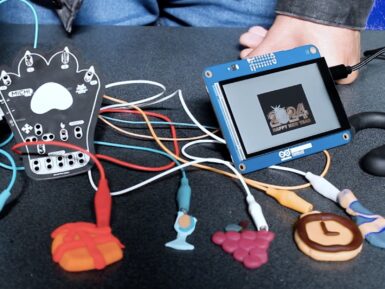
IR receiver sensor
Very sensitive IR sensor with preamplifier, demodulator, and filter calibrated to the frequency of 38 kHz - 600 µs, with built-in amplifier/squarer.
Overview
It has only three terminals and operates on 5 V power supply.
Vdd= + 5 Vdc, GND= ground, OUT= TTL signal output
Tech specs
- Output: active at low level (0.2 V)
- Power supply: 4.5 V ~ 5.5 V
- Power consumption: 0.6 mA
- Wavelength: 940 nm
- BPF center frequency: 38 kHz
- Operating temperature: -10°C ~ +60°C
- Signal range: max. 10 m
- Dimensions: 7.3 x 7.6 x 5.2 mm
- Weight: 0.68 g
Get Inspired

Display real-time meeting room availability, synchronized with Google Calendar through Arduino IoT Cloud.

Watching back a slideshow of some of your favorite times of the past years is a great way to reflect on what’s happened and get excited for the future. The Electronic Cats crew wanted to incorporate this concept into a more simplified, interactive form which resulted in the Garrita project. Garrita is a homemade platform that lets an Arduino GIGA R1 WiFi with GIGA Display Shield transform into a highly mobile slideshow thanks to its larger onboard memory capacity and convenient layout. This year, the Electronic Cats were able to take their image shifter concept even further with Michi: an existing project that turns any conductive object into a capacitive touch-sensing controller. Whenever one of Michi’s inputs are toggled, the board sends a signal to the GIGA R1 WiFi that causes the current slide to advance to the next one. In order to go from a locally stored image to something on the Display Shield, users first transform their images into a more suitable format via the LVGL conversion tool. Once downloaded, the resulting files can be easily bundled into a Sketch before they become accessible in the application code. To see more about how the Electronic Cats built Garrita, you can read their write-up here on Hackster.io.





